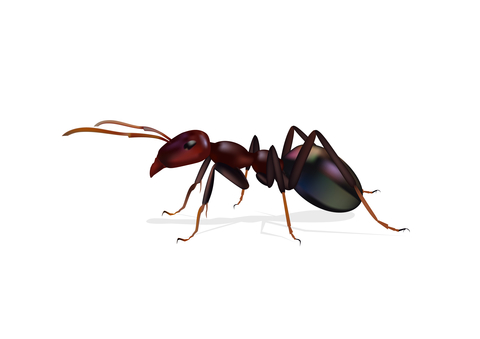Ants
ANTS
Ants are often the most bothersome insect you may see! They can show up in large numbers, and on occasion bite and sting. They will eat proteins, fats, sugars, anything they can find in or around your home. This often brings ants in contact with pet food, pantry items, even our bathrooms. While these problems normally originate outside, at Thrive Pest Control we will perform and inspection of the interior of the home, as well as the exterior to make sure an address any activity around your home.

Odorous House Ants
These ants are the most common to be found in your home. They are often the small black ants we see trailing along the baseboards or on the kitchen counter! Control of these ants can be difficult due to their large nests inside, as opposed to making nests outside like other species.
The preferred food source for these ants is a protein base. Often they can be found eating aphids, on plants, and occasionally will feed on termites if they are present. Any food in our home containing protein and sugar will attract them. Pet food is another common food source.
The odorous house ant can be identified by the odor they release when crushed. Some people report the smell as being similar to coconut or citronella.
Inside homes these ants will nest inside of the wall voids. They will gain access to other parts of the home by following electrical and plumbing that runs through the walls. This complicates treatments of ants inside. Multiple treatments may be required to fully eliminate the colony and eggs that will hatch following initial treatment.
Call Thrive pest Control at the first sign of ants in your home! We will schedule an appointment as quickly as possible.
SCHEDULE A FREE ESTIMATE TODAY!
PESTS WE GUARANTEE
Menu
Pavement ant
Pavement ants are small solid black ants often found around residential homes. Pavement ants and odorous house ants are often identified as each other. Pavement ants are people are referring to when they mention “sugar ants”. Unlike the Odorous house ant, Pavement ants prefer to nest on the exterior of homes, but when foraging will come inside to find food and water. These ants will eat crumbs left on the counter, spilled toothpaste in the bathrooms, or track down and spilled pet foods.
When it comes to the diet of these ants they are not picky! As the name implies “picnic ants” will eat almost anything if it has protein, sugars, starch… as you can imagine that covers most foods.
An infestation can start by seeing 1 ant. Individual ants will often be on a scouting mission to find a food supply for the colony. Once food is found that one ant will return to the colony and recruit other ants to return to the food source. Often these groups of ants will start a new ant bed closer to the food source and the problem spreads.
When you notice an ant here or there, don’t wait! Call Thrive pest control to get it under control.
Fire Ants
Fire ants can be identified by their large mounds seen popping up in yards or vacant lots. They have a reddish-brown color but are most know for a painful sting and can be dangerous to those allergic to them. Their mounds are easily visible in your yard. In addition to stings, they can damage vegetation, roads, and electrical systems.
Fire ants spend the vast majority of their lives outside and seldom venture into homes. These ants seek out meats, greasy foods, and even sweet treats. Additionally they will also feed on plants, occasionally causing damage.
Control of fire ants can be challenging for a few reasons. While the entrances to colonies is often visible, below the surface they can be very large and cover a large area. While a major focus of any ant control is to eliminate the “queen” these colonies often have multiple queens to address. If part of the colony becomes sick or is killed, the remaining will separate themselves and recover a short distance away. Additionally once one colony is eliminated other in the area may move in and take over the same ground.
Since Fire ants can bite and cause painful stings call Thrive pest control at the first indication. The best method for dealing with these is more often fire ant prevention, than reaction.

